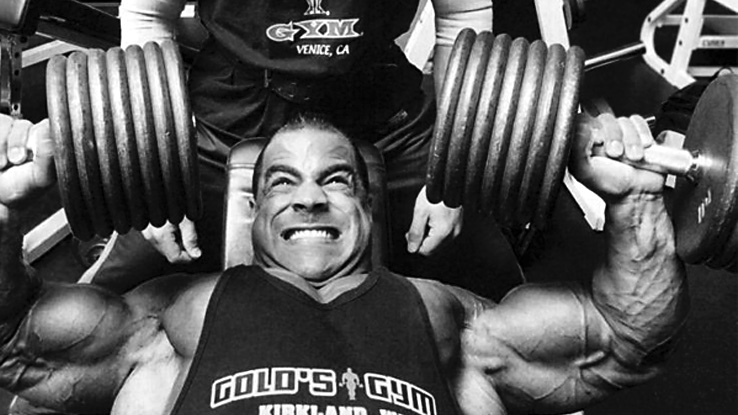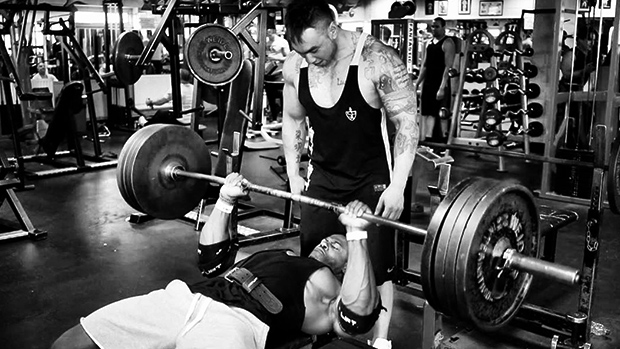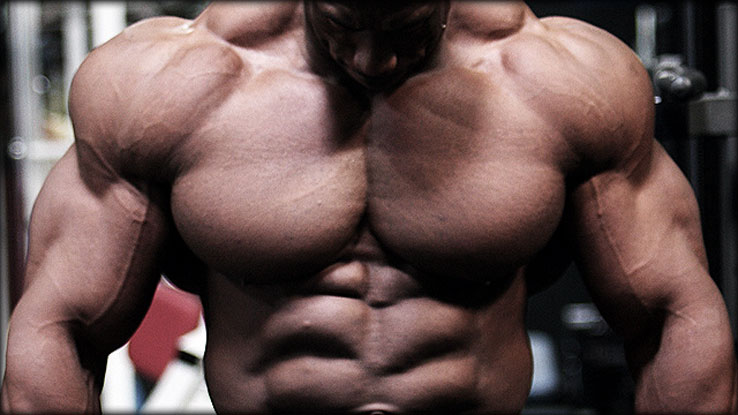Here's what you need to know...
- Designing your training program to maximize acute hormone release is a waste of time.
- Focus instead on adding more local muscle overload, which has been shown repeatedly and reliably to build size and strength.
- Overload is achieved in three ways – more load, more volume, and more density. Try to increase at least one of these factors in each successive workout.
Do anabolic hormones derived from exercise affect muscle building? Or have we all been buying into baseless broscience? Let's see what the latest research has to say.
Hormone Basics
In terms of our body's communication systems, hormones work like old-school carrier pigeons. Think of the pigeon as the class of hormones and the message they carry as the specific hormone (insulin, growth hormone, etc.). Once released from a gland, hormones travel throughout the body and bind to specific receptors on an organ.
Muscle Communication
Here's a practical illustration. Barney goes to the gym to deadlift. After his first set, all sorts of messengers (hormones) in his body start firing in order to coordinate the repair process across multiple tissues. So if Barney deadlifts again, he'll have a bit more muscle, strength, and soft tissue such as tendons and ligaments. Hormones are one way for the body to communicate all the intrinsic factors that go into this complex repair process.
Testosterone and Muscle Growth
One of the main hormonal communicators of the repair process is Testosterone (T). Injecting supraphysiological doses of T enhances muscle hypertrophy and strength, but is of course considered illegal by most sports-governing bodies and comes with additional risks. But do the acute bumps in T that we derive from exercise add up to additional muscle growth?
Testosterone 101
According to LabCorp, the average total T range for males is 348 to 1197 ng/dl (nanograms per decilitre). This matches a study by Bhasin et al. who found the mean T levels were about 724 ng/dL. Under 348 ng/dL is considered hypogonadal, meaning you likely enjoy watching The Notebook on Netflix.
T levels above 1,197 ng/dL are considered supraphysiological since they're above the average natural production range. Typically, the only way to reach that high range, barring any pathophysiology, is through injecting synthetic T or other anabolic hormones.
Exercise and Test Release
Can specific exercises cause the body to release more T than other ones? You bet! Research has shown a strong association between training and hormonal changes.
In a 21-week study with untrained subjects, Ahtiainen JP et al. showed a correlation between T levels and the changes in isometric strength and muscle size (as measured by MRI), suggesting that both serum basal T concentrations and training-induced changes in acute T responses may be important factors.
And contrary to what you might read online, shorter rest periods did not improve acute hormone release – both the short rest group (2 minutes) and longer rest group (5 minutes) gained size and strength over a 6-month period.
Even the time of year might affect acute T levels asAnderson AM et al. showed that peak levels of T were found during June-July, with minimum levels present during winter and early spring. So obviously many things can affect hormone levels, but do any of these changes add up to more muscle and strength?

Bigger Muscles?
It's well established that doing heavy compound exercises will elicit a higher T release. Still, we need to show that this acute bump in T leads to more muscle.
In a great study done by West et al., 12 healthy young men trained their biceps for 15 weeks on separate days and under different hormonal conditions (high T versus low T). In the low T condition, they did arm curls only; in the high T condition they did the same arm exercise but followed it immediately with a high volume of leg exercises – 5 sets of 10 reps of leg presses and 3 sets of 12 reps of leg extension/leg curl "supersets" – to elicit a large increase in endogenous T release.
The theory being tested was that the higher T condition derived from the leg exercises would lead to an increase in muscle size and strength. Interestingly, each subject also served as his own control as one arm was exercised under the high T condition (from doing leg exercises) and the other arm was exercised on a different day on the low T condition (from just doing the arm exercise). Using each person as their own control helped keep the data "clean" from changes such as sleep, calories, protein intake, etc., that can affect the muscle growth process.
Researchers found that strength increased in both arms, but the increase was not different between the low and high T conditions. Also, muscle size wasn't different in either arm. Strike one for acute T bumps.
However, a study done by Ronnestad, B.R. et al. had the opposite result. Their study showed a greater hypertrophy response in the biceps by having subjects do the T-boosting high-volume leg exercises first! Again, this was the opposite outcome of the previous study done by West et al., which showed no difference.
While there were a few differences in the studies, the main difference was the order of the exercises. West and friends had subjects do the leg exercises after the arm exercises; Ronnestad had subjects do the leg exercises first.
Physiology is messy. While increasing T is a good thing, it's not as simple a matter as increasing T by X ng/dL will result in Y extra inches on your arms. It's just not a direct, linear relationship.
Academic Pissing Match
An academic pissing match then occurred when Phillips et al. took the same data collected by Ronnestad and found no change in arm size.
Taking it one step further, work by West et al. from Phillip's lab showed that T was not associated with changes in lean body mass. He did find, however, that cortisol was associated with an increase in muscle size. Yes, the scary, bad hormone cortisol.
The last nail in the proverbial acute hormone hypothesis coffin was related to blood flow. Ronnestad's group stated that the reason Phillip's group didn't see any changes was that the hormonal-rich blood wasn't reaching the muscle. Remember, in the study from West, the arm exercises were done first and then the T-boosting leg exercises afterwards.
West et al. said:
"..our data did not support the contention that leg exercise performed after arm exercise compromises potential adaptation to resistance exercise by 'stealing' hormone-rich blood flow."
In short, the hormone-rich blood from doing leg exercises reaches the muscles just fine – it just doesn't do anything! This data matches a guinea pig study (no, they didn't call the subject guinea pigs, they were actual guinea pigs) in 1975 by McManus that showed similar results.
Please Synopsize this Crap For Me
According to the current research, it looks like the muscle geeks beat the broscientists on this one.
- Large muscle movements like squats, leg presses, deadlifts, etc., do result in higher blood levels of anabolic hormones like Testosterone, but these transient and acute increases do not lead to greater overall muscle mass.
- Squats and large compound exercises will increase muscle size and strength, but it's more from local hormonal factors released at the site of most tension.
- This applies if you're in the normal range for Testosterone. If you're very low, T helps. If you use exogenous steroids, those help too, but you're going outside of the normal range.
I know this is frustrating, so what's a T-hungry boy to do if he wants to put on muscle?
3 Steps To More Muscle
Sorry, but designing your program to maximize acute hormone release is a waste of time. Instead, focus on adding more local muscle overload, which has been shown repeatedly and reliably to be beneficial.
Overload is added in three main ways:
- More Weight Also known as a higher intensity (percentage of one-rep max). The more load you can move, the more overload you provide to your muscles. Benching 315 pounds for a single is more overload than benching 275 for a single.
- More Volume Volume is the amount of work you're doing and classically defined as weight x sets x reps. Doing 3 sets of 10 reps of bench presses with 275 pounds yields 8,250 pounds. Just adding one more set (now 4 sets of 10) yields 11,000 pounds of volume (2,750 pounds more). Volume is a powerful driver for hypertrophy as you're physically doing more work.
- Better Density Density is simply volume over time. If it takes you 12 minutes and 37 seconds to do 3 sets of 10 reps with 275 pounds on week 1, but you do the exact same volume in 10 minutes and 57 seconds in week 2, your density has improved. Better density equals more overload, which equals more muscle and strength, hormonal changes be dammed.
Let's leave the crazy hormone manipulations through exercise to the broscientists!





